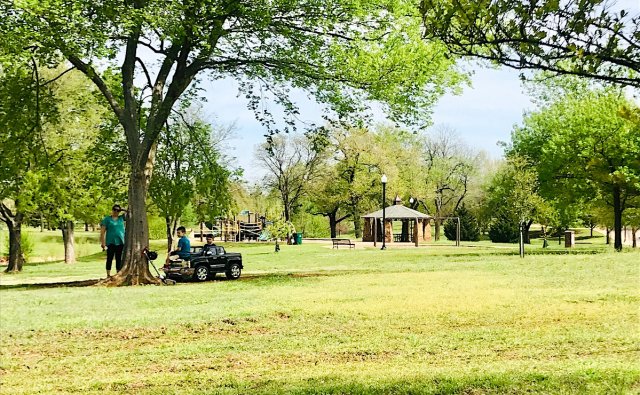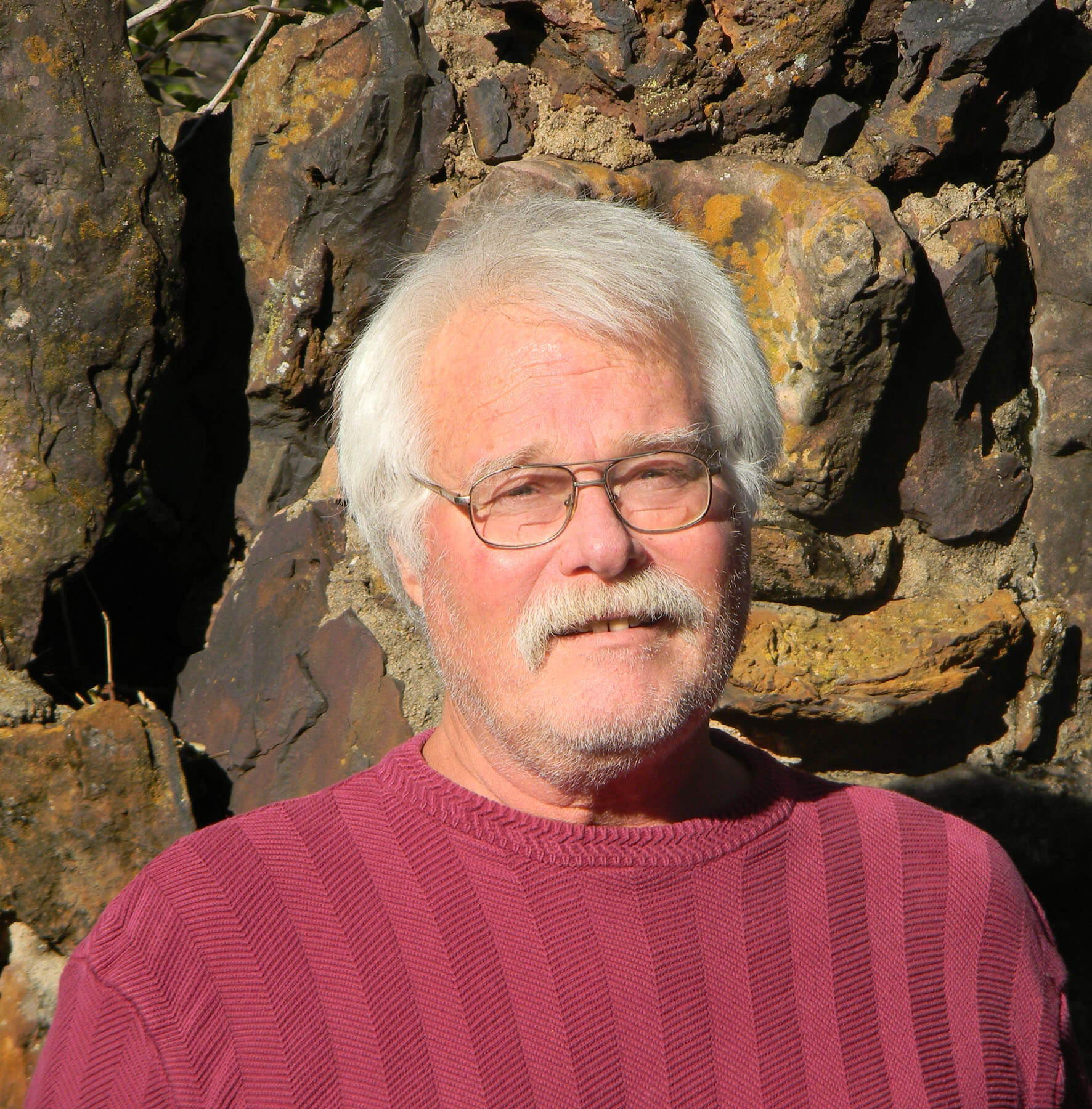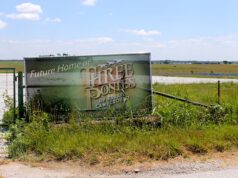
I wake up each morning feeling great and reminding myself of the only thing on my “to-do” list — enjoy life. But anxiety keeps seeping in.
I find solace walking the dog at nearby Edgemere Park in Oklahoma City, where I see young families demonstrating so many of the values that will get us through the COVID-19 crisis. Children in that outdoor classroom have been cleaning trash from the creek and creating street art. Some are allowed to pet my dog, while other parents err on the side of caution. (By the way, the American Veterinary Medical Association has said, “there’s little reason to avoid petting” and it relieves stress, but we should also practice “park petiquette.” But now that a tiger has reportedly tested positive for COVID-19, Dali is getting less physical contact from the new people we meet.)
Back at home, I muse over my own experience and read education experts for insights into how parents should handle schooling at home this spring. I’m struck by the number of international educators who recommend learning practices and values that are very different from those that became the norm in the 21st century.
Experts look outside the box for distance learning lesson plans
This is especially true for educating young children. Jennie Weiner writes in the New York Times, “Maybe this is the perfect time to call a timeout on the academic rat-race that was never healthy or fair in the first place.”
The University of Ottawa’s Joel Westheimer advises, “Stop the worksheets. Stop trying to turn your kitchen into Jaime Escalante’s A.P. math class.” Westheimer then writes, “And when brick-and-mortar school (hopefully) returns next fall, let’s give teachers a great deal of latitude in what, how and when to teach any particular subject matter.”
Suggestions in the Guardian indicate that experts in the United Kingdom are turning back the clock to the progressivism of my childhood. They recommend “child-led learning,” “outdoor learning,” praising “children’s efforts and behavior, not their achievements,” and respecting their autonomy.
Head teacher Joanna Conway adds:
Let your child create their own structure or timetable for the day, combining their ideas and home learning. If they try and schedule double PlayStation every morning, then it’s probably time for parents to step in, but give them the option first. I think a lot of parents will be impressed with the outcome.
Jules White recommends, “Listen to your child. Enjoy hearing your child explain what they are being asked to do, and the challenges they face.” And White also warns parents to “avoid an unhealthy over-reliance on screen time in all of its guises.”
The University of Kentucky’s Candace Hargons describes best practices for talking with kids about COVID-19. Hargons writes, “Invite your kids to tell you or show you how they feel. It doesn’t need to be a long conversation. You can simply ask: ‘How are you feeling today?’” Also placing empathy over academic skills, she says kids can answer with written or spoken words, or drawings. The parent can respond, “Thank you for sharing that with me,” or “That sounds tough. Would you like a hug?”
Hargons also stresses to parents the importance of maintaining “a similar rhythm” in the ways children play, as well as “media literacy” and taking care of yourself.
Not surprisingly, former PBS education reporter John Merrow offers the wisest advice I’ve read. He acknowledges, “Distance learning and online instruction are all the rage, but most of this seems to be ‘same old, same old’ — the straightforward presentation of information.”
Merrow rejects the common term, “home-schooling,” and he doesn’t care for “home-teaching” as a substitute. He sees an opening for a more profound view of education, which he calls “home-learning.” Home-learning also offers a more valuable and healthier opportunity for adults “because parents who embrace this challenge will learn a great deal — and not just about dividing with fractions!”
I’d add that adult neighbors can also learn from kids in the park.
In times like these, Merrow affirms, “While anxiety is understandable, it’s healthier to look for the opportunities that COVID-19 is creating.” He explains:
What COVID-19 offers us is the opportunity to redefine education, to turn young learners into producers of knowledge. Not video game players, but creators of apps. Not watchers of films, but producers of their own documentaries. Not drudges, but dreamers.
Children: You cannot ignore the permanent human situation

I am a retired high school teacher whose career included 9/11. My students responded by committing to deep learning and wrestling with profound moral questions, and I was struck by lessons learned by Hillsdale College’s E.J. Hutchinson through a lecture in the aftermath of 9/11 on C.S. Lewis’s sermon Learning in War-Time.
On the anniversaries of the Alfred P. Murrah Federal Building bombing and 9/11, my John Marshall students would listen to Henryk Gorecki’s Symphony No. 3. We would discuss its lyrics taken from graffiti scrawled in a Gestapo cell during the Holocaust, and we would try to contemplate the deepest themes of the human condition.
Lewis’ and Hutchinson’s lesson is that “war and disease do not create death where there was no death before. We were already mortal.” These tragedies “simply aggravate the permanent human situation so that we can no longer ignore it.”
During the rise of Hitler and Mussolini, Lewis recalled that we were “fiddling while Rome burns.” Under the “shadow of catastrophe,” our “search for knowledge” helped redirect the fight against totalitarianism, where the people took charge of their fate.
A progressive vision of home teaching could be the foundation for a post-modern version of the democratic victory which followed C.S. Lewis’ famous sermon. There is no worksheet or digital program that will teach our kids how to overcome pandemics, global warming and the rise of authoritarianism. Only families and communities listening to and loving each other can help our children become the 21st century’s version of the “Greatest Generation.”






















